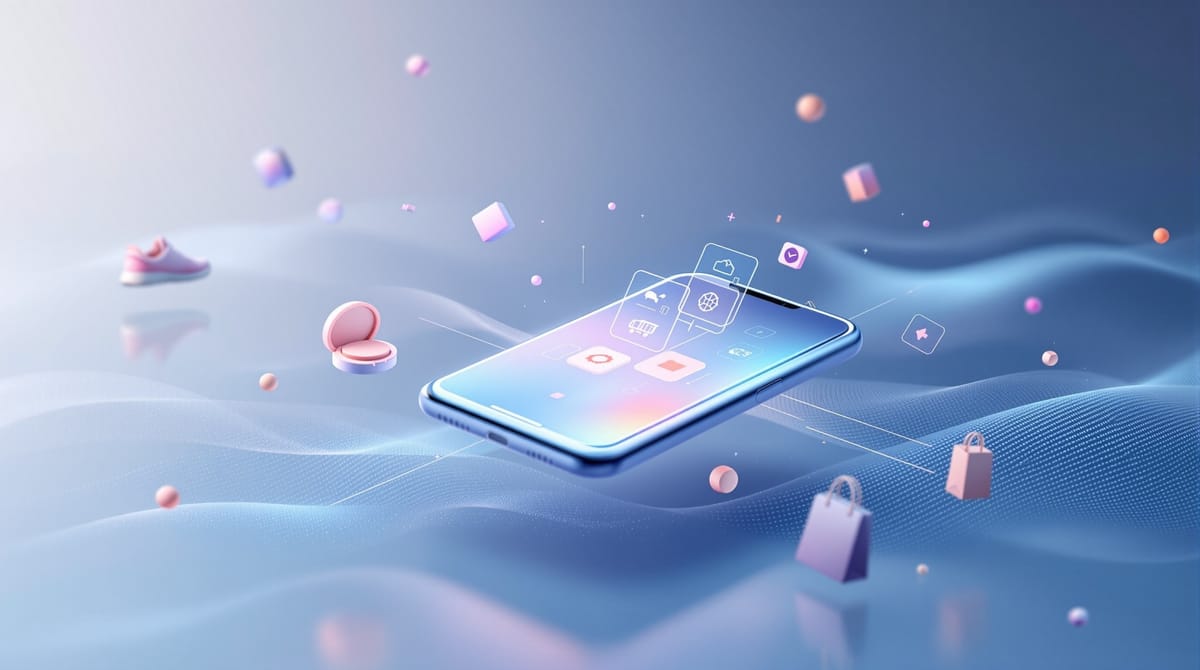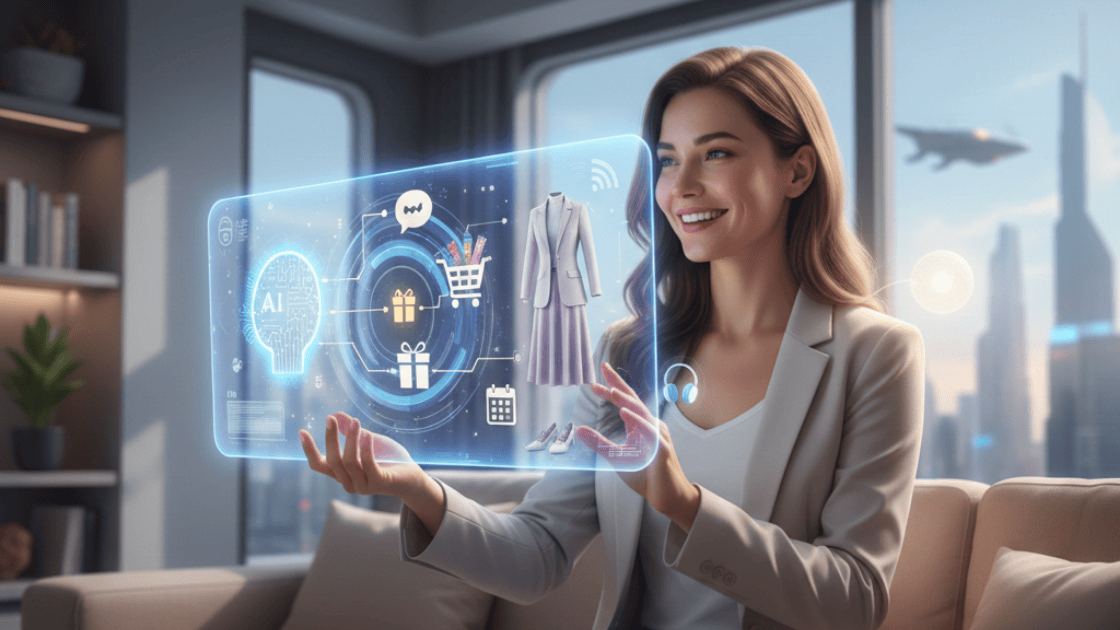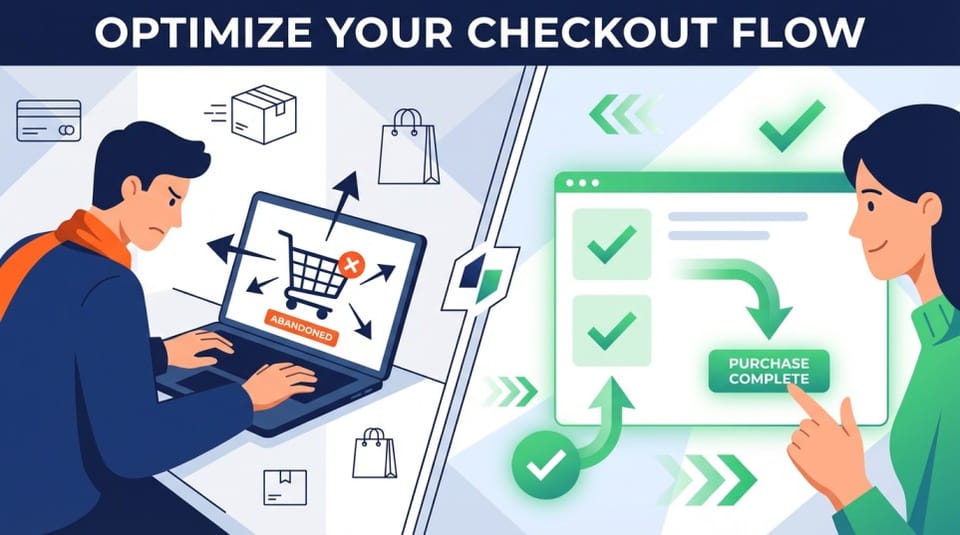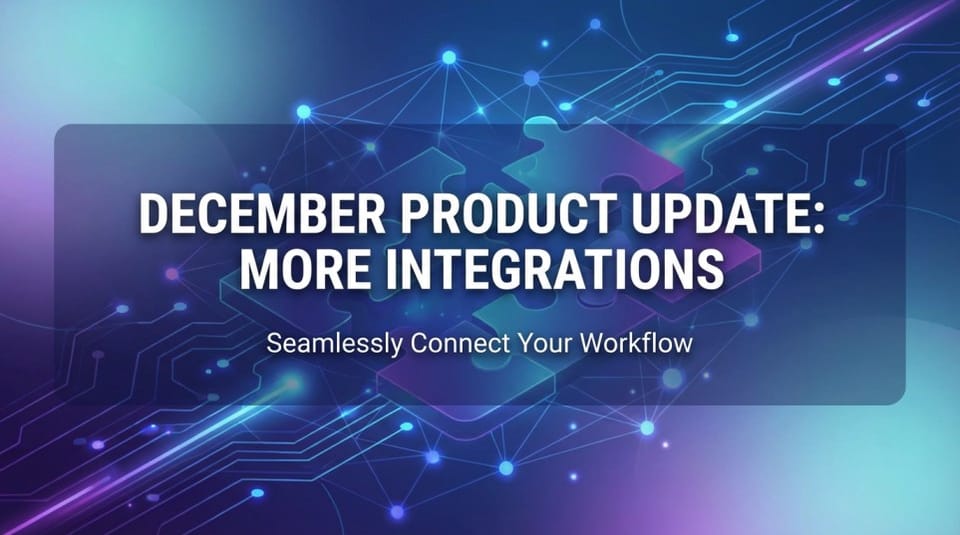AI Shopping Assistant - Top Use cases (2025)
A practical guide to AI shopping assistants: 10 use cases from first visit to loyalty, with examples for discovery, bundles, checkout, post-purchase, and care.

An AI shopping assistant can add clear, practical value from the first visit to long‑term loyalty. Its job is to remove guesswork, explain trade‑offs in simple language, and shorten the path to a good choice. In this blog, we shall go through both conventional and innovative use cases where AI shopping assistants shine.
Stage 1: First visit / Top‑of‑funnel engagement
Goal: Turn low‑intent curiosity into useful engagement in the first minute.
What it can do
A shopping assistant can offer quick, helpful tools to users. In beauty, it can invite users to upload a selfie and detect common skin concerns, then produce a starter routine or shade shortlist. In apparel and footwear, it can ask for height, weight, a couple of brands that fit in the past, and one dislike, then return a size and cut with a short reason. In cosmetics, it can map a shopper’s current brand shade to the store’s shades across finish and coverage. In fashion or home, it can take a quick photo or a 30‑second quiz and return a small, coherent board instead of a long catalog.
It can keep the interaction short and guided. It can ask three to five questions or collect one selfie, run a vision or fit model in the background, and map the output to real variants such as shades, sizes, fabrics, or finishes. It can build a three‑item shortlist and add one sentence on why each option qualifies. For home and gifting, it can analyze a room photo for palette and style cues and propose a set such as sofa, rug, and lamp with one click to add the set to cart.
Examples
- “I am new here. My skin is oily and acne‑prone. I want a beginner routine that will not dry me out.”
- “Here is my selfie. Which foundation shade matches my warm undertone for summer light?”
- “I am 5′9″ and 165 lb. Levi’s 32×32 fits in the waist but the thighs feel tight. Which chinos solve that?”
- “We moved into a small apartment. Suggest a minimal living room under 800 dollars that matches this sofa photo.”
- “Last‑minute gift for a sister who loves Pilates. Budget under 60 dollars.”
- “I need a first backpack for a ninth grader. Light laptop, water bottle, and gym clothes.”
OutcomeAI Shopping assistants offer value to users in the first 30 to 60 seconds they spend on your store. You can expect a huge lift in time-spent-on-site and add-to-carts. It also generates useful first‑party signals on undertone, fit profile, or style that can personalize later sessions.
Stage 2: Discovery and education
Goal: Replace blind keyword search with a conversation that narrows to the right options.
What it can doIt can translate fuzzy needs into criteria such as breathability, weave, GSM, fiber, budget, sensitivity, or ergonomics. It can pull specs and review snippets into a small compare view in plain language and explain trade‑offs. When a shopper taps “find similar,” it can use visual similarity to find the same silhouette in a lighter fabric or a warmer lining. For gear and apparel, it can factor in torso length, strap range, cuff width, heel‑to‑toe drop, or insole volume and say why something fits a 5′2″ frame or broad shoulders.
Examples
- “I run hot and live in Austin. Which sheets breathe and do not pill?”
- “Compare your vitamin C serum to Paula’s Choice 15 percent. Which is gentler for sensitive skin?”
- “I need a hiking daypack that fits a 2 liter bladder and a DSLR. I am 5′2″.”
- “I like this jacket. Show me similar cuts in a lighter fabric.”
- “Quiet dishwasher under 700 dollars with a quick cycle and a stainless interior.”
- “Show me summer chinos with stretch that do not shine under office lights.”
OutcomeAI shopping assistants make shoppers feel informed rather than sold to. Product page engagement usually goes deeper and bounces drop.
Stage 3: Guided selling and bundle building
Goal: Act like a thoughtful associate who builds the right cart.
What it can doIt can ask two to four clarifying questions that matter, such as mineral or chemical SPF, fabric allergies, pet breed, desk width, or noise tolerance. It can assemble a coordinated bundle in Good, Better, and Best tiers with clear trade‑offs. It can include care items and consumables that prevent “I forgot” moments, such as a lens cloth and spare battery with a camera or enzyme cleaner and size‑appropriate chew toys for a puppy. It can present a one‑tap add to cart with a simple toggle to swap components like moisturizer finish or chair base.
Examples
- “Rebuild my skincare with cleanser, moisturizer, and SPF under 120 dollars total.”
- “Furnish a neutral home office with a 60 inch standing desk and a quiet chair for a 5′6″ person.”
- “New puppy coming home. Build a starter kit for a medium breed that chews a lot.”
- “I am moving into a dorm. Essentials under 300 dollars, twin XL bedding included.”
- “Beginner espresso setup that fits a 24 inch counter. Grinder included.”
OutcomeHigher order value through relevant bundles.
Stage 4: Confidence and risk removal
Goal: Surface doubts and resolve them before the shopper walks away.
What it can doIt can answer policies in plain English and give calendar dates by checking inventory and carrier SLAs. “Delivers by Wednesday, October 8” is clearer than “3 to 5 days.” It can check ingredient compatibility and propose an alternative when there is risk, such as a serum that clashes with tretinoin. If size or fit is uncertain, it can steer to try‑at‑home or an exchange‑friendly path.
Examples
- “What is your return window on sale items, and can I exchange sizes?”
- “Will this serum irritate my skin if I use tretinoin?”
- “How long is shipping to Denver if I order today, and do you offer eco packaging?”
- “If these boots run small, how easy is a size exchange?”
- “Is the crib mattress cover waterproof or water resistant?”
OutcomeLess friction near checkout and fewer last‑minute drop‑offs.
Stage 5: Cart and checkout assist
Goal: Make checkout smooth, fair, and predictable.
What it can doAI shopping assistants can suggest useful add‑ons that help reach free shipping. It can validate promo eligibility and apply the best available. It can explain what is possible amongst delivery preferences and offer split shipping or store pickup when supported. It can summarize taxes and shipping in simple language.
Examples
- “You are 12 dollars short of free shipping. Would a travel‑size cleanser or lens cloth be useful?”
- “Apply the best promo I qualify for.”
- “Can I ship to work on weekdays and home on weekends?”
- “Show pickup options within five miles for Saturday morning.”
- “Add a card message and gift receipt without prices.”
OutcomeFewer abandoned carts and fewer tickets about promos, shipping math, or delivery options.
Stage 6: Save the sale, respectfully
Goal: Bring people back with something that solves the hesitation.
What it can doIf someone leaves mid‑browse or mid‑cart, it can send a short, relevant micro‑experience and a one‑tap return link through the last used channel such as email, SMS, or WhatsApp. For sofas, it can send a three‑photo size guide in a 10 by 12 room. For shoes, it can offer a 30 second fit check or an alternative with a wider toe box. If price was the sticking point, it can point out a bundle or a value size that makes sense.
Examples
- “Still deciding between the 2.5 seat and 3 seat sofa. Here is a three photo size guide in a 10 by 12 room.”
- “Your size 8 trail runners are low in stock. Want a quick fit check or a similar model with a wider toe box?”
- “The linen set you viewed is part of a bundle. Save 18 dollars if you add the pillowcases.”
- “You left two serums in your cart. Here is a side by side that highlights strength, scent, and tingling.”
OutcomeWin‑backs feel like service and often lead to a confident purchase.
Stage 7: Post‑purchase support
Goal: Turn “Where is my order” into proactive, useful help.
What it can doIt can pull live courier events and translate them to normal language such as “Out for delivery and arriving between 2 and 4 pm.” It can attempt delivery edits like gate codes or date changes and suggest a fallback when the carrier does not allow changes. For exchanges, it can recalibrate fit or shade with a short quiz and suggest the right replacement. For product issues, it can walk through step‑by‑step fixes with short clips before escalating.
Examples
- “Track order 48219.”
- “Change delivery to Saturday and add gate code 1907.”
- “This moisturizer feels heavy. Suggest a gel alternative that fits my routine.”
- “My lamp flickers. What should I check before I return it?”
- “I assembled the chair but it wobbles. Show me the likely fix.”
OutcomeLower “WISMO (Where Is My Order)” volume, faster resolutions, and a smoother path to the next purchase.
Stage 8: Replenishment and care
Goal: Keep customers stocked and help them care for what they own.
What it can doAI shopping assistants can predict refill windows from past orders and typical usage, then offer one‑tap reorder or subscribe with a clear skip. For running shoes, it can use mileage from connected apps or manual input to suggest the next model with the right support. For apparel and cookware, it can send care reminders that prevent damage, like a gentle cycle guide for merino or a re‑seasoning nudge for cast iron.
Examples
- “I bought the 30 ml serum in July. When should I reorder?”
- “My running shoes hit 350 miles. What is a good replacement for overpronation?”
- “How do I wash a merino sweater so it does not felt?”
- “When should I replace a carbon water filter in a two person household?”
OutcomeMore repeat purchases without heavy discounts and fewer product complaints.
Stage 9: Loyalty, reviews, and referrals
Goal: Create useful, timely nudges that feel personal.
What it can doIt can time messages based on real consumption and reference the actual purchase. It can add utility first and product second. For skincare, it can remind the user that a vitamin C bottle lasts about ten to twelve weeks and offer a value size. For cookware, it can connect a splatter guard to the exact skillet diameter. For apparel, it can map seasonal fit and suggest the fall version of a summer chino with the same thigh ease. For cameras, it can send a three minute guide to low light portraits and a bundle on a fast prime lens and tripod. For cosmetics, it can keep shade maintenance simple by asking for a quick selfie at the start of summer to suggest a slightly deeper match.
It can make actions one tap: preview in cart, swap size or shade, or schedule store pickup.
Examples
- “Your Vitamin C lasts about 10 to 12 weeks with daily use. You are two weeks out. Try the 50 ml value size?”
- “You picked the 11 inch skillet in May. The 11 inch splatter guard prevents oil pops and fits your pan.”
- “You liked Summer Tech Chinos in 32×32. Fall Brushed Twill has the same thigh ease with warmer lining. Compare colors?”
- “You bought a mirrorless camera. Here is a three minute guide to low light portraits and a bundle on a fast prime lens.”
OutcomeHigher repeat purchases and lifetime value because the outreach feels relevant.
Stage 10: Community and service moments
Goal: Finish the loop with experiences that turn satisfied buyers into fans.
What it can doIt can surface local guides or community galleries when someone buys outdoor gear and offer a starter checklist for a first outing. It can explain loyalty and redemption rules in plain language and generate a gift link for points. It can filter the catalog by values such as recycled nylon, cruelty free, or Fair Trade and remember the preference for next time.
Examples
- “I loved the hiking pack. Which local trails work for a first outing?”
- “Can I gift my loyalty points to a friend?”
- “Filter to products that use recycled materials and show your supported charities.”
- “I bought a sewing machine. Recommend beginner projects and the right needles for denim.”
OutcomeEmotional loyalty layered on top of points and discounts.
Closing note
An assistant that stays concrete, explains trade‑offs clearly, and respects time can reduce returns and support load while giving shoppers a sensible, human experience. Want to try a best in class AI shopping assistant for your online store? Get started here.


